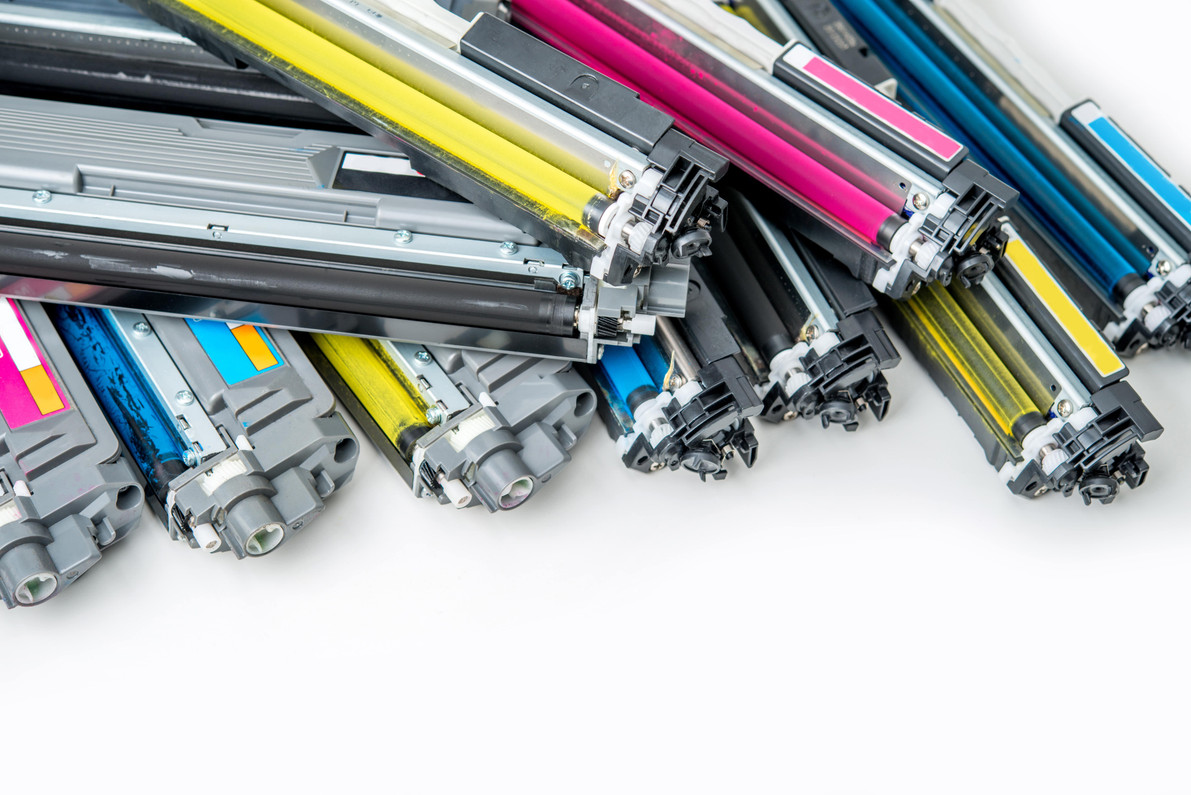Decoding Toner: Navigating the Choices and Ensuring Quality
Understanding Toner: From Basics to Best Choices
We all use it, some of us buy it, and yet not many people actually know what it is; toner. In the simplest of terms, toner is a powder used in laser printers, copiers, faxes, and such that will put an image on a paper. Now, the powder won’t just stick to the paper, another component, usually called a “drum,” will put an electronic charge to the paper which bonds with the toner, resulting in your image on the page.
Toner is essential to the business world due to its use with formal documentation, advertisements, and much more. Often times, it is an overlooked expense and causes headaches for everyone involved. What doesn’t help, at all, is the confusion that permeates the toner industry: What does OEM mean? Should I use compatible, refurbished, refilled toner?
OEM is initialism for Original Equipment Manufacturer. If you have an HP LaserJet Printer, then the OEM toner would be the HP brand toner. Using the OEM toner in a printer, obviously, is a sure-fire way to make sure you’re putting in the proper part to your printer. You will gain peace of mind but miss out on considerable cost savings that are available to you as there are alternatives choices you can consider.
Non-OEM toner is a great way to cut back on your toner expenses. The confusion lies with how it is labeled. Terms like compatible, refilled, recycled, first use and others can generate a misconception as to the quality one will receive with a non-OEM toner. The most common term used is “compatible.” Compatible generally means that the toner was manufactured by someone who isn’t the manufacturer of the printer for which it will be used. There are some wonderful non-OEM toner manufacturers that provide a product that will far exceed the expectations set forth by the OEM, but there are an obscene amount of non-OEM toner companies providing a poor quality product at a price you would expect.
When you review non-OEM toner for your printers, there are three points to consider:
- Warranty - Most OEM toners provide a year’s warranty on their products, from the date of purchase. This warranty usually covers failure like smudges, streaks, and printer recognition issues. Your compatible toner warranty should be relative to what makes you comfortable. There are compatible toner manufacturers that provide warranties from 30 day periods all the way to lifetime warranties.
- Page Yield - Page yield is often times misunderstood. Usually, when a toner lists a page yield of 2,000 pages, it means 2,000 pages with 5% paper coverage. You will find some non-OEM toner manufacturers, such as the Xerox and NXT compatibles sold by Monroe, that will provide higher page yields at reduced pricing.
- Accountability - Nothing is manufactured to a 0% failure rate. Anything produced on a mass scale will have small issues arise here and there. While an inconvenience, it’s simply unreasonable to expect perfection 100% of the time. What is unacceptable, is for a manufacturer to not be held accountable for the quality of their products. This point goes hand in hand with the Warranty. If there is an issue with the non-OEM toner, how will it be resolved? Is there an evaluation period of the defective toner before you’re reimbursed? Are you, the consumer, responsible for shipping the defective toner back to the manufacturer? Will the manufacturer try to weasel their way out of a quality replacement? Here at Monroe, we are known for always having the highest quality products and offering industry leading lifetime customer service. We take pride in our products and always strive for excellence. If you decide to purchase from us, you can do so knowing that Monroe stands behind everything we sell.
When I offer non-OEM toner, I make sure that the manufacturer is highly respected, with many years’ experience, and expects to be held directly accountable for the quality of products they provide. In the past several years, non-OEM toner has come a long way. Xerox Replacement Toner Cartridges, XRC, is one of my favorites to recommend. Technology improvements, competition, and demand have steered the industry to a higher quality product and incredibly reasonable pricing. The trick is to weed out the inferior companies, the providers peddling misinformation, low-quality products, and poor accountability.
Recent Posts
-
From Sales Leader to Strategic Architect: The Return of Jason Marsdale
A Return Rooted In People, Purpose, and Growth Some journeys come full circle. After previously h …Dec 16, 2025 -
Monroe at DMWF 2025: How Our Team is Shaping the Future of Digital Marketing
How A Two-Day Conference Is Sparking Innovation For Monroe Systems for Business When your company …Dec 11, 2025 -
The 2026 Ultimate Guide to Buying a Printing Calculator
2026 Ultimate Guide to Printing Calculators: Expert Insights and Selection Tips Welcome to the mo …Dec 09, 2025




